1. Project Purpose
A catastrophic earthquake, named "The 2011 off the Pacific coast of Tohoku Earthquake," with a magnitude of 9.0, occurred Friday, March 11, off the coast of Tohoku (the northeastern part of the Japan), and the tsunami generated by the earthquake caused devastating damage to parts of the Kanto and Tohoku regions, especially in the prefectures along the Pacific coast.
The areas affected by the tsunami had experienced tsunami disasters in the past. Structural and nonstructural measures had been implemented to mitigate tsunami damage based on past records of disasters, and these affected areas were known as some of the areas best prepared against tsunami disasters.

Yoshihama village suffered serious damage in the 1933 tsunami. The village leader showed strong leadership in guiding residents to high hinterlands. Because of his initiative, this village suffered damage mainly just to farmland, and almost none to houses.
These preparations included hazard mapping, early warning and evacuation exercises, and these areas were considered to have a high level of tsunami readiness.
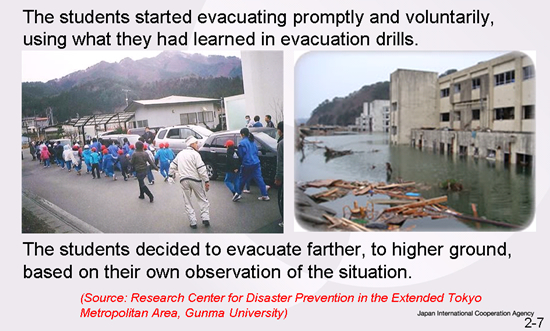
Case of Successful Evacuation, by Students in Kamaishi City.
The total evacuation ratio can be said to be up to 90%, because the population of the area 1 km from the coast line zone was around 450,000, and total casualties were no more than 30,000.
A typical case of a successful evacuation was that of the students in Kamaishi City.
However, the magnitude of the tsunami on March 11 greatly exceeded the assumptions of disaster management plans, and the result was widespread and severe damage that required national level resource mobilization for the emergency response.
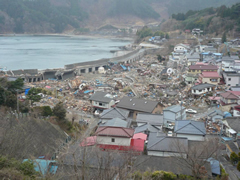
The tsunami magnitude was exceeded the assumptions of design and caused the damages to the tsunami seawall. (Toni, Kamaishi City)
In response to this unprecedented catastrophe, plans for disaster management, crisis management and emergency response will be reviewed based on concrete investigation of the disaster. Also, such a review process will draw attention from the whole world because Japan has advanced technology in the field of earthquake and tsunami disaster management.
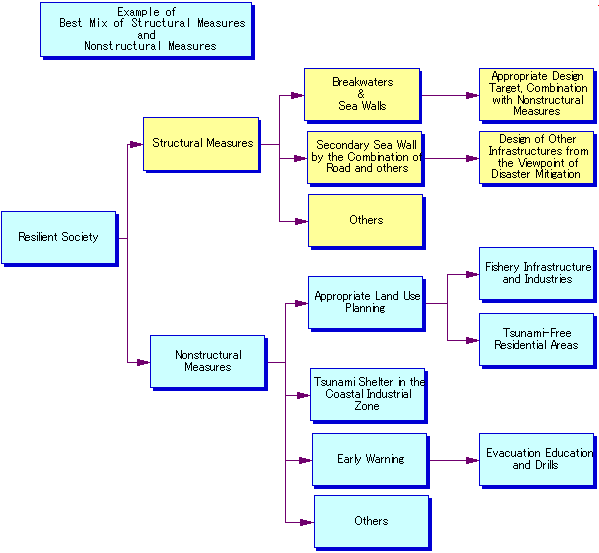
In this context, this research project aims to achieve the following through the collection and analysis of information and research results on this earthquake and tsunami by governmental institutions, universities and other academic societies, and through the review of disaster management plans, to:
- 1 . Identify lessons learned from the disaster itself and the recovery processes that can apply to JICA's disaster management projects
- 2 . Reflect in JICA's sector assistance guideline on disaster management the identified lessons learned
- 3 . Prepare recommendations using post-disaster reconstruction knowledge acquired through JICA reconstruction projects in developing countries.
2. Study Period
The project study will continue until March 2012. On the first term of the study period, the study team concentrates collecting pieces of information on disaster event for the purpose of understanding what actually happened. Subsequently, detailed analysis will be carried out in the second term of the study period using the research results and other information available. Finally, the study team will compile a final report including the outputs of a series of the project study.
Global Environment Department, JICA, has considered a strategy on Disaster management toward 2015, the year of which will be a big turn of Hyogo Framework for Action (HFA).
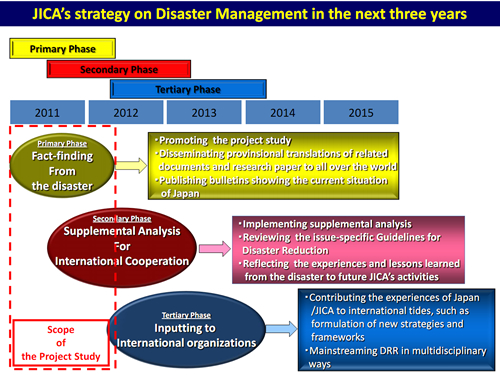
In the strategy, we divide into three phases; primary phase, secondary phase and tertiary phase. Although the project study is corresponding pretty much to the primary phase of the strategy, we are looking at the contribution of our experiences and lessons learned from the disaster to international society. International organizations, such as UNISDR and World Bank and so on, will discuss some frameworks, strategies and directions of the next generation. We hope that the project study will give some findings and outputs back to such international trend as well.




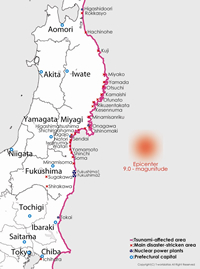
scroll